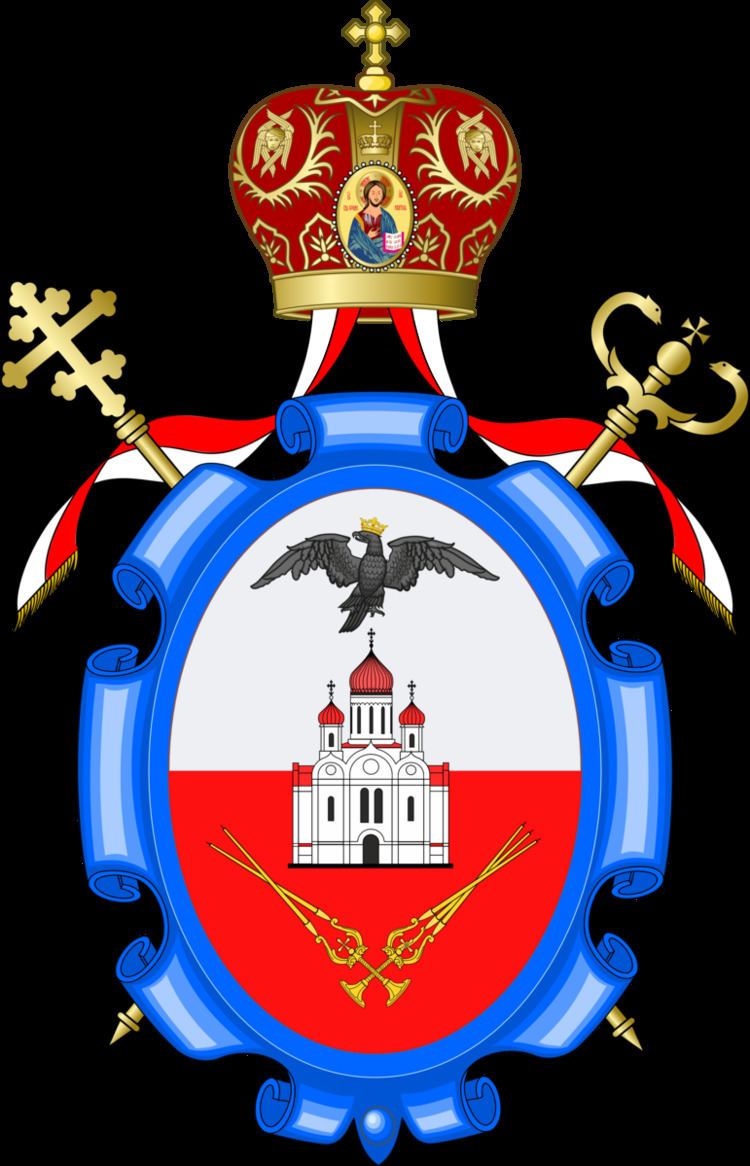Independence 1924, 1948 Territory Poland | ||
 | ||
Founder Ss. Cyril and Methodius Recognition Autocephaly recognised in 1924 by the Ecumenical Patriarchate of Constantinople, and in 1948 by the Russian Orthodox Church. Address Szpitalna 2, 30-001 Kraków, Poland | ||
The Polish Autocephalous Orthodox Church, commonly known as the Polish Orthodox Church (Polish: Polski Autokefaliczny Kościół Prawosławny), or (Orthodox) Church of Poland is one of the autocephalous Eastern Orthodox Churches in full communion. The church was established in 1924, to accommodate Orthodox Christians of Polish, Belarusian and Ukrainian descent in the eastern part of the country, when Poland regained its independence after the First World War.
Contents
- History
- Administration
- Archdioceses and Archbishops
- Titular Dioceses and Bishops
- Other entities
- References
In total, it has approximately 600,000 adherents.
History
The establishment of the church was undertaken after the Treaty of Riga left a large amount of territory previously under the control of the Russian Empire, as part of the Second Polish Republic. Eastern Orthodoxy was widespread in the Belarusian Western Belarus regions and the Ukrainian Volhynia. The loss of ecclesiastical link due to the persecution of the Russian Orthodox Church in the Soviet Union, left the regional clergy in a crisis moment, and in 1924, the Ecumenical Patriarchate took over establishing several autonomous churches on territories of the new states that were formerly wholly or partially part of the Russian Empire (Finland, the Baltic States, and Poland).
During the interwar period, however, the Polish authorities imposed severe restrictions on the church and its clergy. The most famous example, the Alexander Nevsky Cathedral in Warsaw was destroyed. In Volyhnia a total of 190 Orthodox Churches were destroyed and a further 150 converted to Roman Catholicism. Several court hearings against the Pochayiv Lavra also took place.
After the Second World War most of the ethnically Ukrainian and Belarusian territories were annexed by the Soviet Union, holding up to 80% of the PAOC's parishes and congregation, which were united with the recently re-instated Moscow Patriarchate. The remaining parishes that were now on the territory of the Polish People's Republic were kept by the PAOC, including most of the mixed easternmost territories such as around Chełm and Białystok. In 1948, under pressure from the Russian Orthodox Church, the Ecumenical Patriarchate granted the PAOC autocephalous status.
Although most of the congregation is historically centered in the Eastern borderland regions with considerable Belarusian and Ukrainian minorities, there are now many parishes across the country, as a result of Operation Vistula and other diaspora movements. There are also some adherents in Brazil, resulted from the 1989 canonical union between the hierarchy headed by Metropolitan Gabriel of Lisbon, formerly under the Church of the Genuine Orthodox Christians of Greece, and the Polish Orthodox Church. The European bishops, however, have left the jurisdiction on 2000, which eventually resulted on senior Bishop Chrysostom being raised to archepiscopal dignity. There are now parishes in the states of Rio de Janeiro, Pernambuco and Paraíba, plus a monastery in João Pessoa.
In 2003, following the decision of the Holy Sobor of Bishops of the Polish Autocephalous Orthodox Church, the New Martyrs of Chelm and Podlasie suffering persecution during the 1940's were canonized.
Administration
The church is headed by the Archbishop of Warsaw and Metropolitan of All Poland: Sawa (Michał) Hrycuniak (1998–). It is divided into the following dioceses:
